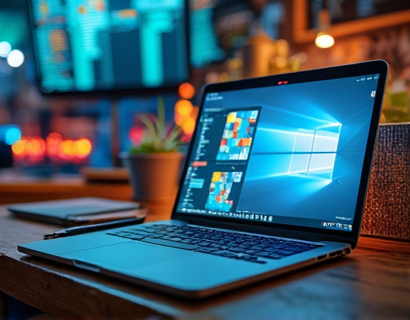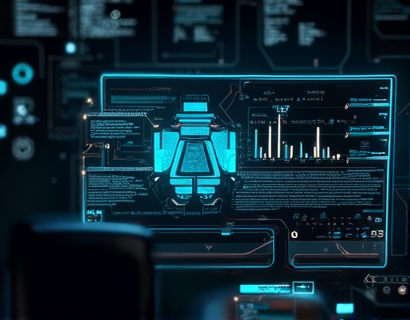Decentralized File Management: Revolutionizing Business Collaboration
In the digital age, efficient and secure file management has become a cornerstone for business collaboration and productivity. Traditional centralized file management systems often face challenges such as single points of failure, security vulnerabilities, and inefficiencies in access control. An innovative approach to addressing these issues is the adoption of decentralized file management solutions. This article delves into how a decentralized online platform can streamline business collaboration, ensuring secure and efficient access to vital data while enhancing overall team efficiency.
Understanding Decentralized File Management
Decentralized file management refers to a system where data is not stored in a single central location but is distributed across multiple nodes in a network. This approach leverages blockchain technology and peer-to-peer networking to create a robust and resilient file management system. Each participant in the network has a copy of the data or a portion of it, which ensures that the system remains functional even if some nodes fail or go offline.
The core principle behind decentralized file management is to eliminate the dependency on a central authority or server. This not only reduces the risk of data breaches and loss but also enhances data integrity and availability. By distributing data across a network, the system can dynamically scale to accommodate growing data volumes and user demands, making it highly adaptable to various business needs.
Enhancing Security Through Decentralization
Security is a paramount concern for businesses handling sensitive information. Decentralized file management systems offer several advantages in this regard. Since data is not stored in a single location, the risk of a massive data breach is significantly reduced. Even if one node is compromised, the entire dataset remains secure as it is replicated across multiple nodes.
Encryption plays a crucial role in the security of decentralized file management. Files are encrypted before being stored and decrypted only when accessed by authorized users. This ensures that even if data is intercepted during transmission, it remains unreadable without the proper decryption keys. Additionally, access control mechanisms are implemented to ensure that only authorized users can view or modify specific files, further enhancing the security of the system.
Improving Access Efficiency
One of the key benefits of decentralized file management is the improvement in access efficiency. Traditional centralized systems often suffer from slow load times and bottlenecks, especially when multiple users are accessing files simultaneously. In a decentralized system, files are stored closer to the users, reducing latency and improving access speeds.
The peer-to-peer architecture of decentralized networks allows for parallel data retrieval, which means that multiple users can access different parts of a file simultaneously without causing delays. This not only speeds up the file retrieval process but also optimizes bandwidth usage, making the system more cost-effective and environmentally friendly.
Streamlining Collaboration
Collaboration is at the heart of modern business operations, and decentralized file management platforms are designed to enhance this process. These platforms provide a seamless and intuitive interface for teams to share and collaborate on files in real-time. Users can grant specific permissions to team members, ensuring that each person has access only to the information they need.
Version control is another critical feature of decentralized file management systems. Every change made to a file is recorded and timestamped, allowing teams to track the history of modifications and revert to previous versions if necessary. This not only maintains the integrity of the data but also fosters accountability among team members.
Case Studies and Real-World Applications
Several businesses across different industries have successfully implemented decentralized file management solutions, reaping significant benefits. For instance, a global software development company adopted a decentralized platform to manage its codebase and project files. The transition resulted in a 40% reduction in file access times and a 30% increase in team productivity. The enhanced security measures also led to a decrease in reported data breaches.
A financial services firm utilized a decentralized file management system to secure sensitive client data. The implementation reduced the risk of data leaks by 50% and improved compliance with regulatory requirements. The system's decentralized nature ensured that data remained accessible even during network outages, minimizing downtime and maintaining business continuity.
Technical Foundations: Blockchain and P2P Networks
The technical underpinnings of decentralized file management systems are rooted in blockchain technology and peer-to-peer (P2P) networking. Blockchain provides a transparent and immutable ledger for tracking file transactions and access permissions. Each file is represented as a block in the chain, with cryptographic hashes ensuring data integrity.
P2P networking enables nodes in the network to communicate directly with each other, eliminating the need for a central server. This decentralized architecture not only enhances security and efficiency but also reduces operational costs. The distributed nature of P2P networks makes them highly resilient to attacks and failures, ensuring continuous availability of the file management system.
User Experience and Interface
A critical factor in the success of any file management platform is the user experience. Decentralized file management systems are designed to be user-friendly, with intuitive interfaces that simplify complex operations. Users can easily upload, share, and manage files without requiring extensive technical knowledge.
The interface typically includes features such as drag-and-drop file uploads, search functionality, and collaborative editing tools. Permission settings are straightforward, allowing administrators to set granular access controls for different users and groups. This ensures that sensitive information is protected while maintaining ease of use for all team members.
Scalability and Flexibility
One of the most significant advantages of decentralized file management systems is their scalability. As businesses grow and their data needs evolve, these systems can easily accommodate increased data volumes and user counts without compromising performance. The distributed nature of the network means that additional nodes can be added to handle higher loads, ensuring that the system remains efficient and responsive.
Flexibility is another key aspect, as decentralized platforms can be integrated with existing workflows and tools. They support various file formats and can be customized to meet specific industry requirements. This adaptability makes them suitable for a wide range of businesses, from small startups to large enterprises.
Challenges and Considerations
While decentralized file management offers numerous benefits, there are also challenges and considerations to keep in mind. One of the primary concerns is the initial setup and migration of existing data to a decentralized system. This process can be complex and time-consuming, requiring careful planning and execution.
Another consideration is the need for user education and training. Since decentralized systems operate differently from traditional centralized solutions, users must be trained to leverage the full potential of the platform. Providing comprehensive documentation and support can help mitigate this challenge.
Interoperability with other decentralized applications and platforms is also an area that requires attention. Ensuring that the file management system can seamlessly integrate with other tools and services used by the business is essential for a cohesive and efficient workflow.
Future Trends and Innovations
The landscape of decentralized file management is rapidly evolving, with ongoing innovations set to enhance its capabilities. One area of focus is the integration of artificial intelligence (AI) and machine learning (ML) to improve data management and security. AI-driven analytics can help identify potential security threats and optimize file access patterns, further enhancing the system's efficiency.
Another promising development is the incorporation of Web3 technologies, which build upon blockchain and decentralized networks to create more interactive and user-centric applications. Web3 file management platforms could offer advanced features such as decentralized identity verification and smart contracts for automated file sharing and access control.
Conclusion
Decentralized file management represents a transformative shift in how businesses handle file storage, access, and collaboration. By leveraging blockchain and P2P networking, these platforms offer enhanced security, improved efficiency, and a more resilient infrastructure. As businesses continue to seek innovative solutions to streamline their operations, decentralized file management stands out as a promising and effective approach. Embracing this technology can lead to significant improvements in productivity, data integrity, and overall business performance.











































